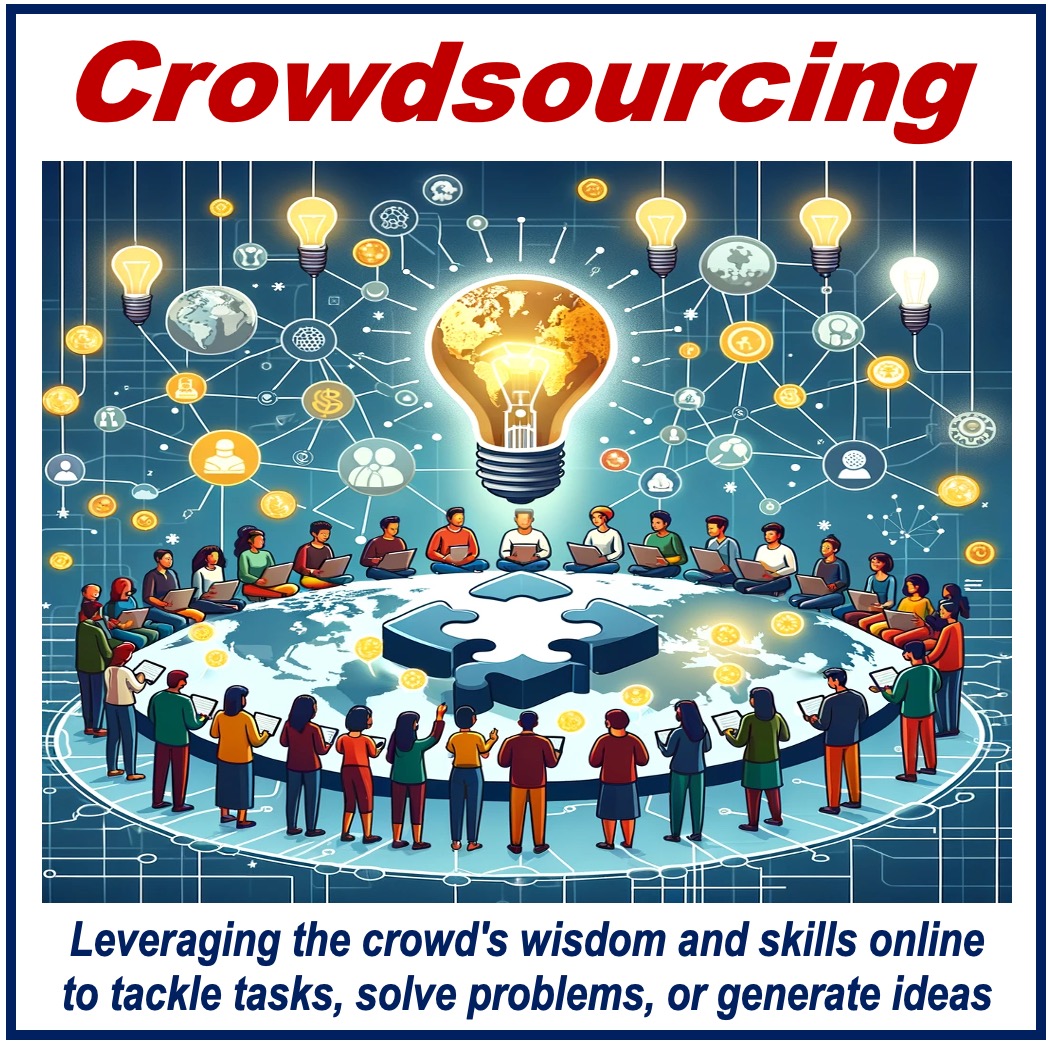If you are obtaining information, opinions, or work from a large group of people via the Internet or apps, you are involved in crowdsourcing. It is a way of solving problems and creating new ideas.
Put simply, it means getting things from a crowd of people (hence the name), usually online.
Crowdfunding, the practice of funding a project or venture by raising monetary contributions from a large number of people, typically via the Internet, is a type of crowdsourcing.
The Cambridge Dictionary has the following definition of crowdsourcing:
“The act of giving tasks to a large group of people or to the general public, for example, by asking for help on the internet, rather than having tasks done within a company by employees.”
Idea behind crowdsourcing
The idea behind crowdsourcing is to take tasks that are traditionally performed by specific individuals and spread them out among a group of people through an open call.
This approach leverages the collective intelligence and skills of the crowd to accomplish tasks efficiently and innovatively.
How does it work?
You identify a problem and put out an open call for solutions. People with diverse skills, expertise, and backgrounds contribute their ideas or resources voluntarily. As crowdsourcing is carried out online, your contributors may come from every corner of the globe.
You gather and analyze the contributions and use the most suitable solutions. You can even crowdsource this second task of selecting the best solution.
Crowdsourcing, a form of collective effort, can be applied to a wide range of activities, including problem-solving, gathering information, funding, product development, data analysis, and content creation.

Benefits of crowdsourcing
-
Diversity
You can access a wide pool of talent and ideas from every corner of the world. You can tap into a global network of people who are willing to contribute, bringing a rich diversity of information, styles, ideas, and perspectives.
-
Lower costs
Crowdsourcing is also cost-effective. By distributing tasks among a crowd, you can usually get tasks completed more cheaply, quickly, and efficiently than if you used traditional methods.
-
Innovation
Tapping into a crowd of people also fosters innovation. With so many people contributing, you are more likely to get a wider range of solutions than you might from a closed team. This can lead to more creative and out-of-the-box ideas.
Challenges
-
Quality control
When dealing with many contributors, quality control may be difficult, especially if they have varying levels of expertise.
-
Vast volumes of data
Managing and filtering a large quantity of information and ideas is not an easy task. It can also be time-consuming.
Crowdsourcing platforms
There are many internet platforms that specialize in crowdsourcing. Here is a list of the top seven (source 2024: adamenfroy.com):
Conclusion
Crowdsourcing is a powerful tool for engaging large, diverse groups of people to solve problems, complete tasks, innovate, and fund projects.
By leveraging the collective ability of the crowd, you can achieve goals in a way that is typically more efficient and creative than traditional methods.
Video – What is Crowdfunding?
This video, from our YouTube partner channel – Marketing Business Network – explains what ‘Crowdfunding’ is using simple and easy-to-understand language and examples.
